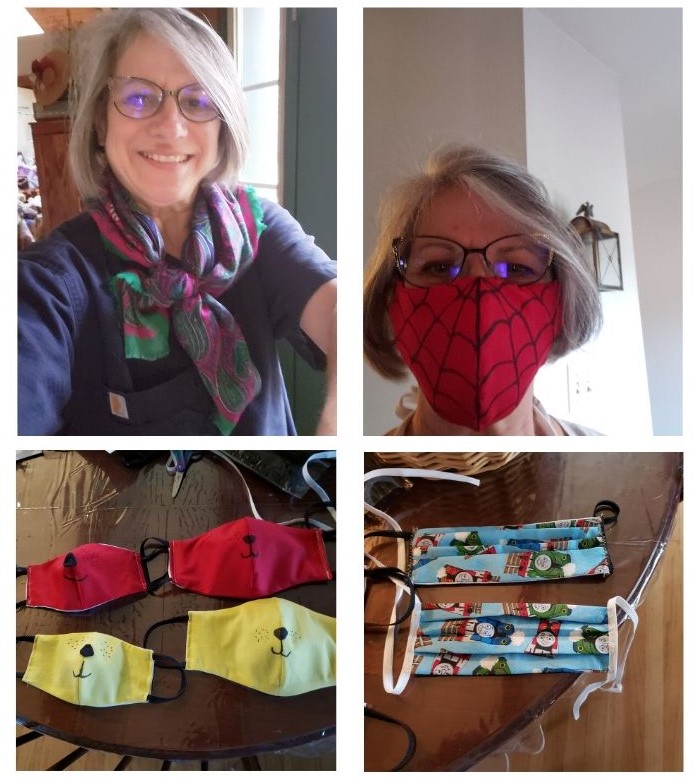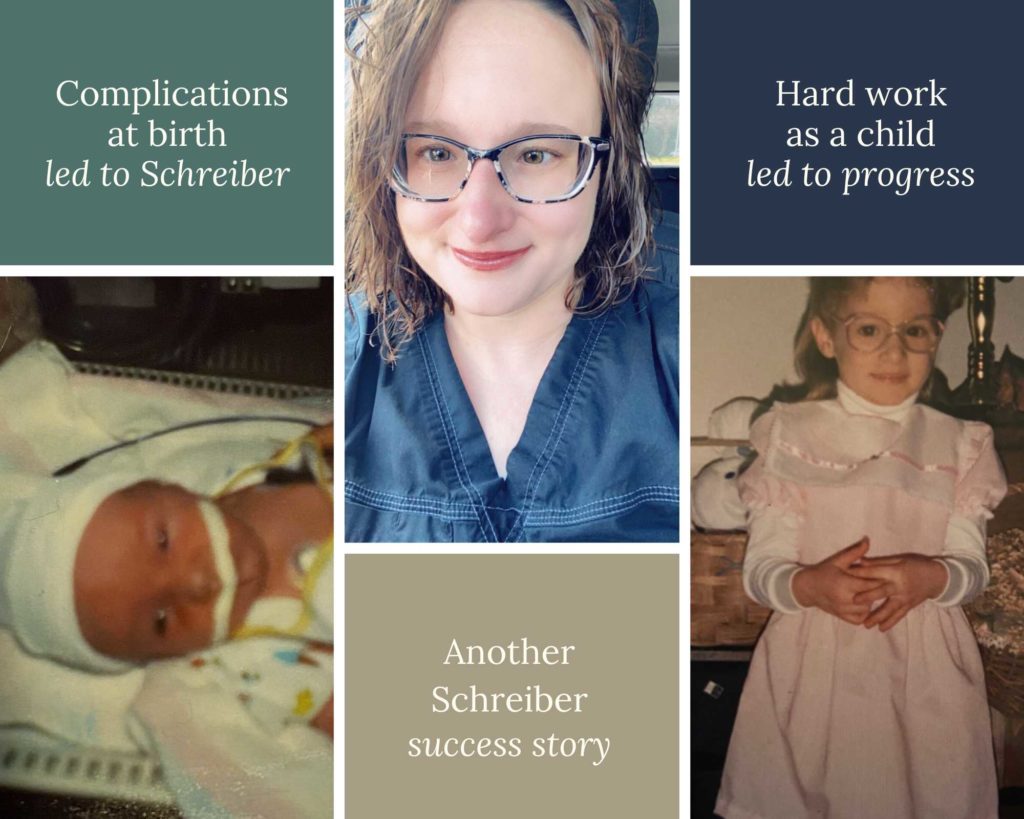Uncategorized
12 ways to help kids be OK with medical masks
May 6, 2020
By Angie Rice and Bernie Hershey
Now that masks are being worn to prevent the spread of COVID-19, parents are scrambling to help their children be comfortable around people with masks on. A child younger than 4 years old or one with autism relies on seeing specific parts of the face to recognize someone they know, like a parent. Often, it’s the face they focus on to read expression and emotion. Put a mask on, and it’s different. And maybe a little frightening.
If you’re coming to Schreiber or another appointment with medical professionals, you can download a social story from Autism Little Learners, and you can check out the ideas we have collected here to help you and your child manage the possible anxiety.
- Make masks fun. Play games with them, like Peek a Boo. Use a favorite toy or stuffed animal and have them wear a mask. Have them play with masks in the mirror. Counting is calming: Set a timer and see who can leave their mask on the longest.
- Routines are important, too. Matter-of-fact statements such as, “Now we all wear our masks when we go outside for a walk!”
- Allow the children to customize or “design” the mask. Giving them control over the look of the mask can help reduce their anxiety.
- Make videos. Record everyone in your family wearing their mask so that when the child becomes scared or anxious again you can replay the video to remind them.
- Use specific masks for Mom and Dad. That way a child can associate those masks with those people. Personalize the mask with a decoration or even a cologne or aftershave to add another identifying sensation.
- Pretend the mask gives you special super hero powers. Superheroes from Batman and Spiderman to Teenage Mutant Ninja Turtles wear masks. Show them pictures or videos to remind them.
- Tap into their interests. If they like Thomas the Tank Engine, draw his simple face or even writing the word “Thomas” on their mask will trigger the association with this famous series. Thomas faces can be downloaded on line as well. “Paw Patrol” and” PJ Masks” cartoon characters are easy associations with masks, too.
- Connect to their favorite sports stars. Use the idea that sports stars often wear mouth guards or helmets as their protection. “Would Carson Wentz play in the Super Bowl without his helmet? No! He wears protection on his face, and you can, too! So right now, we wear our mask for protection to keep us from getting sick.”
- Make it an animal mask. Use a marker to draw simple animal faces and they can pretend they’re a kitty cat or a sloth.
- Use a favorite book. Books can be a real comfort to young children, so look for the stories they enjoy to make their mask. “Pete the Cat,” “The Very Hungry Caterpillar” and “Where the Wild Things Are” could all inspire a fun mask.
- Use a calming essential oil. Wearing masks so close to the nose can feel claustrophobic and create anxiety. Ninette Jackson, an aromatherapist who owns Josiah’s Oils in Lancaster, has been selling at-cost masks with a pocket for essential oils. She recommends “Kids Calm”, her blend. Oils made with spearmint, lavender and sweet citrus fruits can provide a calming effect.
- Play with the masks on. Teach them that when your eyes have little wrinkles at the corners and your eyebrows raise up you are smiling behind the mask. Talk to them how their face muscles feel when their expressions change. Have them pretend to be angry or sad or surprised and ask them how their eyes change. This can be part of playing in the mirror, too.
Angie Rice and Bernie Hershey are occupational therapists at Schreiber. For more information, contact them at arice@schreiberpediatric.org or bhershey@schreiberpediatric.org.
Leslie Patterson High found her potential at Schreiber
April 21, 2020Since the start of the COVID-19 crisis, Schreiber has been open about the enormous financial challenges we have now. They are challenges that every nonprofit is facing, but we’ve heard from a lot of people for whom Schreiber holds a special place.
People like Leslie Patterson High.
Leslie initially emailed asking how she could help. I said we needed stories. Stories that would remind people the role that Schreiber has played for generations helping thousands of kids grow up so they could live their best lives.
Leslie has one of those stories.

She received services at Schreiber for about four years in the late 1980s. Today, she is married and works as a nurse in a long-term care facility working with seniors. She has six nephews and two nieces that she says she loves to spoil. She loves hiking and photography.
When she was born, though, none of that was certain. Some of it might have been thought to be impossible. But here she is. And she graciously agreed to tell her story, in her own words.
If you are moved by Leslie’s story, you can make a donation to Schreiber here.
“When I was born, an unexpected and a rare thing happened. The umbilical cord prolapsed. In plain terms, as I was about to be born, instead of my head entering the world first, the umbilical cord did. Then, as my body tried to enter, it pinched the cord, cutting off my oxygen supply. My mother had an emergency cesarean section, and that’s how I was delivered. However, the oxygen deprivation caused me to develop more slowly compared with children my age. This became evident as I entered preschool. With the guidance of the doctors, my parents chose to have me begin services in Physical and Occupational Therapy at Schreiber.
“Although that was more than 30 years ago, I can still vividly recall parts of the therapy at Schreiber. I shook my hands when I got excited, especially when I walked. My therapist would walk with me in the hall, reminding me over and over: ‘Leslie keep your hands at your side.’ It didn’t matter if it was 100 times in a session, they did it to help me.
“And it worked. I now walk with my hands at my side.
“I also had difficulty with holding a pencil. I remember the therapist giving me pencil grippers and allowing me to choose the color I wanted (that was my favorite part), and then we would write. Today, writing is one of my biggest passions.
“I struggled with balance, too, so I would mirror my therapists as they stood on one foot or hopped. Every session, I got stronger. When I look back now, I see my time at Schreiber as a time where I had to work hard. But I also had fun. I remember once a friend’s family took me to therapy, and the kids were asking why I got to play on the equipment but none of the other kids did.
“More than being difficult and fun, Schreiber changed my life. I know that there is no way I would have made it to kindergarten on time without the developmental strides my therapists helped me to achieve. I couldn’t hold a pencil or tie my shoes when I got there. But when I was done I could! These days when I tell people I had setbacks as a child, they tell me they would have never known.
“The miracles like these happen all the time at Schreiber. Since 1936 Schreiber has opened their doors and their hearts to children from all over Lancaster County and beyond. Children just like me. Children who, given a chance and some therapy, can overcome all kinds of challenges.
“Schreiber is funded partly through donors and public fundraising. Due to the recent COVID19 crises, fundraising and services have come to a halt. For the first time since 1936, Schreiber has been unable to provide services in the center. Now more than ever, Schreiber needs donations so they can keep improving the lives of developmentally delayed children for generations to come. Please consider donating today. Schreiber still has a lot of life and love to give.”